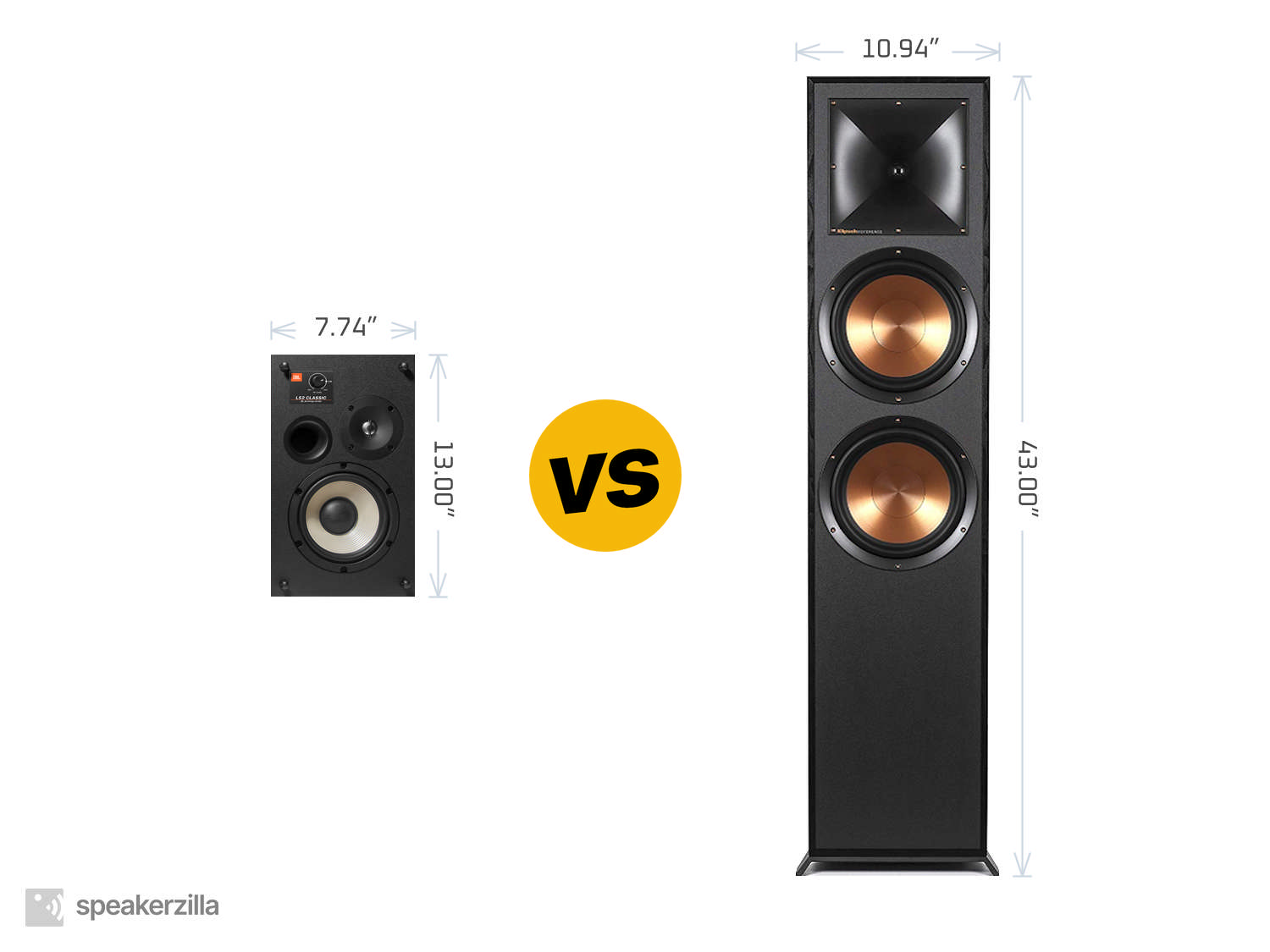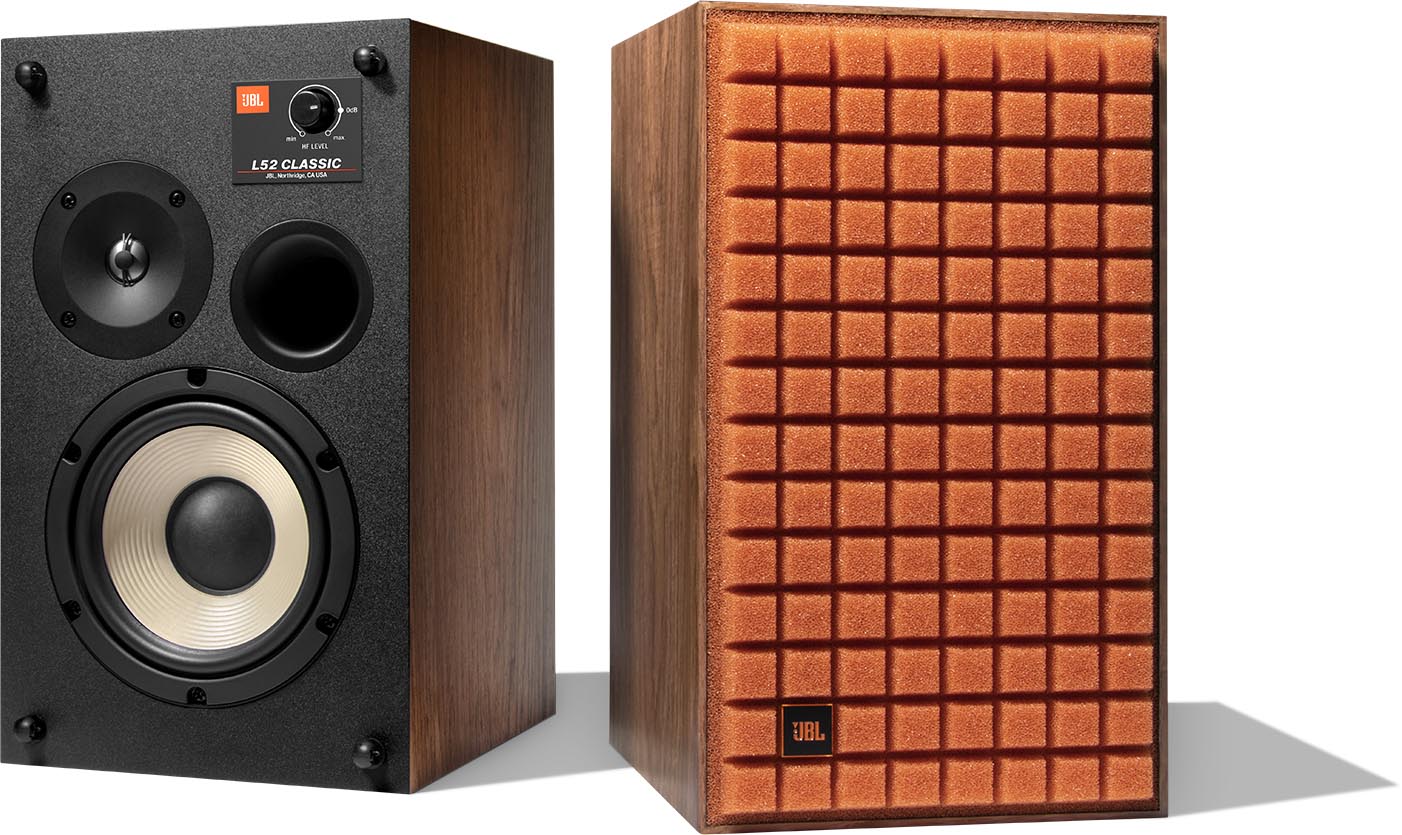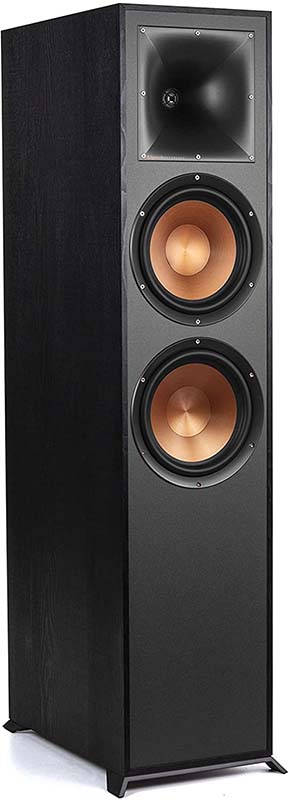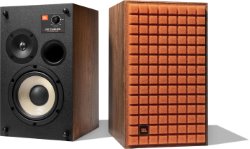JBL L52 Classic vs. Klipsch Reference R-820F

| JBL L52 Classic Bookshelf Speakers | Klipsch Reference R-820F Tower Speakers |
| MSRP | |
| $1000 | $1000 |
| Dimensions (H × W × D) | |
|
13.00” × 7.74” × 8.51” 330mm × 197mm × 216mm |
43.00” × 10.94” × 17.50” 1092mm × 278mm × 444mm |
| Power Type | |
| Passive | Passive |
| Frequency Response | |
| 47-24,000 Hz | 35-21,000 Hz |
|
Amazon.com
|
Amazon.com
|
Key Takeaways
TLDR Summary: In the clash of classic versus contemporary, JBL's L52 Classic bookshelf speakers offer a nostalgic nod with their vintage aesthetics and warm, balanced soundstage, perfect for those craving an intimate listening experience. Meanwhile, the Klipsch Reference R-820F towers stride in with commanding presence; their larger footprint and signature Tractrix horn-loaded tweeters deliver dynamic, room-filling performance, favoring loud, energetic sessions. The choice hinges on personal taste—lush, controlled sonics from a compact form with JBL, against the bold, powerful impact of Klipsch's floor-standers. Your room size and sonic preference will dictate the victor in this acoustic duel.
Speaker Comparison
When considering the spectrum of high-fidelity audio, one must invariably approach the subject with an appreciation for the uniqueness that each brand and model brings to the table. In this particular exploration, we find ourselves juxtaposing two of the industry's esteemed offerings: the JBL L52 Classic Bookshelf Speakers and the Klipsch Reference R-820F Tower Speakers. Both revered in their own right, these speakers present a tale of legacy, design, and sound philosophy that appeals to different sections of the audiophile community.
The Heritage of Sound: JBL's Classic Approach vs. Klipsch's Bold Statement
The JBL L52 Classic carries with it the weight of the company's storied heritage, offering a retro aesthetic that harkens back to the golden age of hi-fi. Encased in genuine wood veneers and flaunting the iconic Quadrex foam grilles, these speakers are more than a nod to the past; they're a testament to the timelessness of quality sound engineering. In contrast, Klipsch's R-820F towers stand tall with a modernist approach, exuding power and presence. Their copper-spun IMG woofers and Tractrix horn-loaded tweeters are not just visually striking, but also a statement of Klipsch's commitment to dynamic, room-filling sound.

 (at Amazon.com)
(at Amazon.com)Size and Space: Considering the Environment
Bookshelf versus floor-standing is often the first decision an audiophile grapples with, and it's a decision that largely depends on the listener's space. The compact nature of the JBL L52 Classics makes them ideal for more intimate settings or rooms where space is at a premium. Their ability to deliver substantial sound from a small footprint cannot be overstated. Meanwhile, the Klipsch R-820F speakers, with their imposing stature, are more suited to larger rooms where they can truly breathe and express the full scale of their acoustic capabilities. They demand space, not only physically but also acoustically, to show off their prowess.
Sonic Signatures: The Auditory Experience
Delving into the sonic character of these two contenders reveals a study in contrasts. The JBL L52 Classics provide a warm and balanced sound, with a smooth mid-range that vintage JBL fans will find familiar. The highs are articulate without being piercing—a hallmark of refined bookshelf speakers that aim to please over long listening sessions. Klipsch, on the other hand, has always been renowned for its efficiency and dynamic range. The R-820F towers make a bold statement with their energetic and upfront sound profile. The highs are crisp and extended, thanks to their proprietary Tractrix horn technology, which also aids in creating a broad and involving soundstage.

 (at Amazon.com)
(at Amazon.com)Another distinguishing factor is the bass response. The JBL L52 Classics, limited by their smaller enclosures, offer a tight and controlled low-end that complements most genres but may leave bass-heads yearning for more. Conversely, the R-820F, with its dual 8-inch woofers, has the physical advantage to move more air and create that chest-thumping bass that can be felt as much as heard. This makes the Klipsch towers especially appealing to listeners who crave a more visceral experience from their music or home theater setup.
Compare to similar speakers
The question of power handling and sensitivity is also crucial in the evaluation. The JBL L52 Classics, with their more conservative power rating, are well-suited to lower-powered amplifiers and tube amp setups, which is often the preference for those seeking a more vintage sound. Klipsch speakers are known for their high sensitivity, and the R-820F is no exception, efficiently converting amplifier power into sound and making them a good match for a wide range of amplification, from modest receivers to more powerful separates.
Ultimately, the choice between the JBL L52 Classic Bookshelf Speakers and the Klipsch Reference R-820F Tower Speakers boils down to personal preference, room size, and intended use. The JBL offers a nostalgic yet refined listening experience that will charm those looking for a speaker that honors the golden days of hi-fi with modern capabilities. The Klipsch, with its imposing design and assertive sound, is crafted for those who seek an immersive, high-impact auditory experience. Both are credible choices in their domains, and either will gratify the ears of the discerning listener who values quality and the unique sound that these storied brands provide.
- JBL L52 Classic reviews and FAQs
- Klipsch Reference R-820F reviews and FAQs
Check Current Prices: |
|
|
Amazon.com
|
Amazon.com
|
Affiliate Disclosure: As an Amazon Associate, we earn from qualifying purchases.

